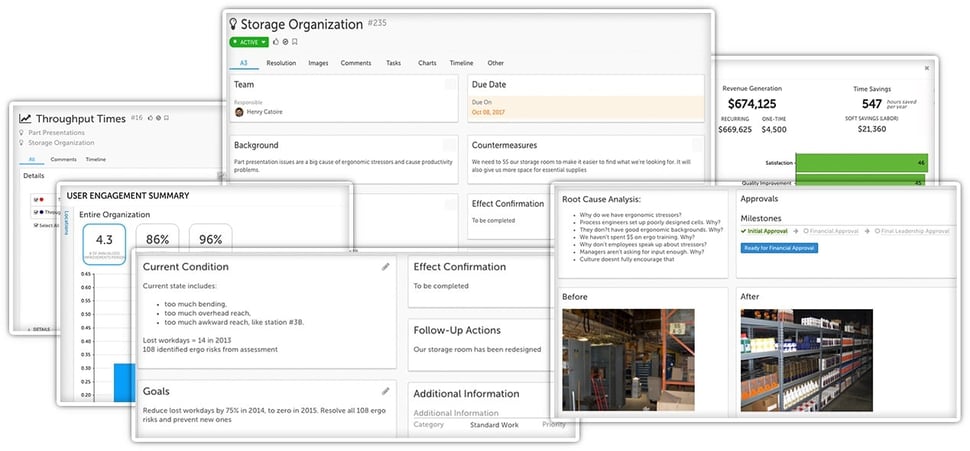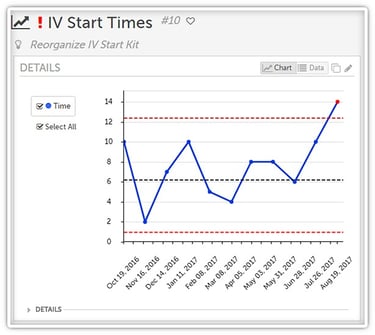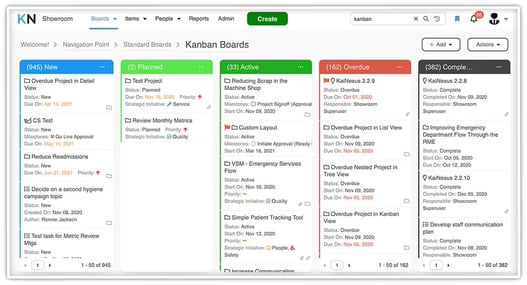 The continuous improvement approach to business is based on a few core principles; focus on the customer, identify and understand how the work gets done, manage and smooth the process flow, remove non-value-added steps and waste, manage by fact and reduce variation, involve and equip the people in the process, and undertake improvement activity in a systematic way.
The continuous improvement approach to business is based on a few core principles; focus on the customer, identify and understand how the work gets done, manage and smooth the process flow, remove non-value-added steps and waste, manage by fact and reduce variation, involve and equip the people in the process, and undertake improvement activity in a systematic way.
A piece of cake, right?
In reality, buying into the ideas behind the business methodology is the easy part. Executing them in the real world is much more challenging. Fortunately, there are a number of continuous quality improvement tools (CQI tools) to help put these principles into action.
#1 - 5S Workplace Organization
An organized and well-stocked workplace is the key to eliminating many of the wastes of Lean Six Sigma, particularly motion and transportation. The 5S method has five steps, all of which start with S in both Japanese and English. They are seiri (sort), seiton (set), seiso (shine), seiketsu (standardize), and shitsuke (sustain). Although the technique came out of the manufacturing sector, it has been used in industries of all types to improve the work environment whether it is an office, hospital, construction site, or factory.
#2 - A3 Problem Solving
A3 gets its name from the European size of paper each report was once confined to. It is a structured problem-solving approach first used at Toyota. The A3 report is the result of an improvement cycle like PDSA or DAMIC (see below). These days, modern practitioners of Six Sigma use improvement software rather than paper for the job.

#3 Catchball
Catchball is a collaboration technique that involves passing ideas from one person to another for input, feedback, and action. Someone starts the “ball” rolling by defining the purpose, goals, background, and challenges. It is always clear who has responsibility for the idea and the ball can bounce around until the improvement or plan is complete. It is ideally suited for eliminating the friction that can happen when people operate in a strictly top-down management style.
 #4 Control Charts
#4 Control Charts
A process control chart is a graph used to monitor how a process behaves over time. Data are plotted in time order in a chart with a central line for the average (sometimes a median), an upper line for the upper control limit, and a lower line for the lower control limit. These lines are calculated from historical data and usually cover three standard deviations from the mean. Process control charts help managers avoid overreacting to every up and downswing. They eliminate problems caused by only looking at average results, instead of the variations of results.
#6 DMAIC
DMAIC is an improvement cycle with five phases: define, measure, analyze, improve, control. This process is used to help ensure that improvements are data-driven, measurable, and repeatable. Ideally, improvement software is used to ensure that the cycle runs smoothly and that results are calculated over the long haul. Once a DMAIC cycle is complete, a new one can begin.
#7 Gemba Walks
During a Gemba walk, a leader visits the place where work is actually done to observe and identify potential opportunities for improvement. Like many Six Sigma tools, Gemba comes from the Japanese. It means, “The real place.” Leaders never review the performance of employees on a Gemba walk, nor do they make immediate changes. Rather, after a period of reflection, the targeted improvements are made in a structured manner.
More on Gemba walks in this free eBook:
#8 Hoshin Kanri
Hoshin Kanri (AKA Policy Deployment) is a strategic planning method designed to produce an organization that is aligned and driving toward the same goals. The approach seeks to balance the need to address daily incremental improvement and achieve the organization’s three to five-year breakthrough objectives.
More on strategy deployment software here.
#9 Kanban
Leaders at Toyota applied the visualization principles commonly used in grocery stores to stock shelves and maintain inventory to auto manufacturing. The goal is to maximize the flow of goods and work without unnecessary inventory or transportation. Cards are used to visualize work, limit work-in-progress, and continuous flow of value.

#9 PDSA
PDSA stands for Plan, Do, Study, Act. Like DMAIC, it is a structured improvement cycle. Each step is documented as the opportunity for improvement is executed. The results form the basis for the current Standard Work and the taking off point for the next improvement cycle.
#10 Standard Work
Speaking of Standard work, it is the documentation of the best practices for any process or task at that given moment. It is typically created and updated by the people who do the work and it forms the baseline for future improvement.
#11 The 5 Whys
The 5 Whys is a simple, yet powerful technique for finding the root cause of a problem. Someone starts with a statement and then continues to ask, “Why?” until the foundation of the problem is discovered. Asking, “Why?” 5 times will often get you there, but the number is a suggestion, not set in stone. (Here’s a good example of how it works in real life.)
#12 Value Stream Mapping (VSM)
Value Stream Mapping is a Six Sigma tool for documenting and analyzing the steps of a process from the raw materials to delivery to the customer. Once the map of the current state is defined, team members can identify unnecessary steps or opportunities to eliminate waste and begin an improvement cycle.
This isn’t an exhaustive list, but as you can see, there are many tools for those practicing Six Sigma to work with. Each lends itself to certain challenges and phases of improvement. When used together they can be a strong force for positive change.



Add a Comment